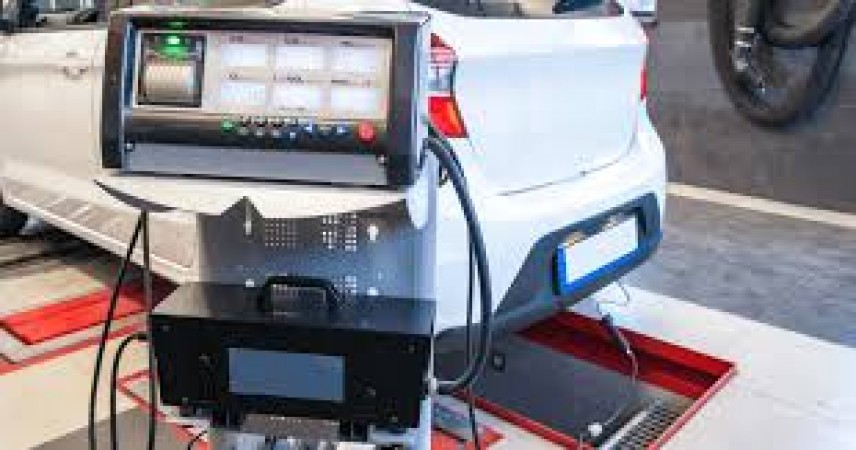
A pollution certificate, commonly known as a Pollution Under Control (PUC) certificate, is an official document issued by authorized agencies or testing centers. It serves as evidence that a vehicle complies with the prescribed emission norms set by regulatory authorities to control air pollution. Essentially, it indicates that the vehicle's emissions of harmful pollutants are within permissible limits.
Importance of Pollution Certificates The significance of pollution certificates lies in their role in environmental conservation and public health. By ensuring that vehicles meet emission standards, pollution certificates contribute to reducing air pollution levels and minimizing the adverse effects on human health and the ecosystem. These certificates are a vital component of regulatory efforts to combat pollution and promote sustainable development.
Process of Obtaining a Pollution Certificate
1. Visit an Authorized Center Vehicle owners seeking a pollution certificate must visit designated pollution testing centers authorized by the government. These centers are equipped with the necessary tools and expertise to conduct emission tests and issue certificates.
2. Vehicle Inspection Upon arrival at the testing center, the vehicle undergoes a comprehensive inspection to assess its condition and emission levels. Trained technicians conduct visual checks and preliminary assessments to identify any potential issues that may affect emissions.
3. Emission Testing The core of the pollution certificate process involves emission testing. Specialized equipment is used to measure the concentration of pollutants emitted by the vehicle's exhaust. Key pollutants monitored during the test include carbon monoxide (CO), hydrocarbons (HC), and particulate matter (PM).
4. Compliance Check Following the emission test, the recorded pollutant levels are compared against the emission standards mandated by regulatory authorities. If the vehicle's emissions fall within the permissible limits, it is deemed compliant, and the process proceeds to the next step.
5. Certificate Issuance Upon successful compliance with emission standards, the testing center issues a pollution certificate to the vehicle owner. The certificate contains essential details such as the vehicle's registration number, emission test results, and the validity period of the certificate. Typically, pollution certificates are valid for six months to one year, after which they require renewal.
Cost of Pollution Certificates
1. Variable Charges The cost of obtaining a pollution certificate varies based on several factors, including the type of vehicle, its age, and the prevailing regulations in the region. Different vehicle categories may incur different testing fees.
2. Government Fees Governments often levy nominal fees for conducting emission tests and issuing pollution certificates. These fees contribute to covering the administrative costs associated with regulating vehicle emissions.
3. Service Charges Pollution testing centers may charge service fees for conducting the inspection and administering the emission tests. These charges reflect the costs incurred by the testing centers in terms of equipment maintenance, staff salaries, and facility operations.
4. Renewal Charges Upon the expiration of the pollution certificate, vehicle owners are required to renew it to maintain compliance with emission standards. Renewal typically incurs additional charges, similar to the initial certification process.
5. Cost Comparison While the cost of obtaining a pollution certificate may vary, it is generally considered relatively low compared to potential fines for non-compliance or the broader environmental and health costs associated with vehicular pollution. Investing in pollution certificates is a proactive measure that can help mitigate environmental damage and reduce long-term societal costs.
Necessary Updates and Compliance Regular updates to emission standards and compliance requirements are essential to ensure the effectiveness of pollution control measures. Regulatory authorities periodically review and revise emission norms to align with technological advancements and address emerging environmental challenges. It is incumbent upon vehicle owners to stay informed about these updates and ensure timely compliance with the latest regulations.
Conclusion Pollution certificates play a crucial role in verifying that vehicles adhere to prescribed emission standards, thereby mitigating air pollution and safeguarding public health. The process of obtaining a pollution certificate involves comprehensive testing and compliance checks to ensure that vehicles meet regulatory requirements. While there are costs associated with obtaining and renewing pollution certificates, they are outweighed by the benefits of reducing pollution-related harm to the environment and human health. Regular updates to emission standards and compliance requirements are necessary to address evolving environmental concerns effectively. By adhering to emission standards and obtaining pollution certificates, vehicle owners can contribute to sustainable mobility and environmental conservation efforts.
New Bajaj Pulsar NS400Z launched in India, can be booked from Rs 5000
Force Motors unveils Gurkha range, prices to be announced soon